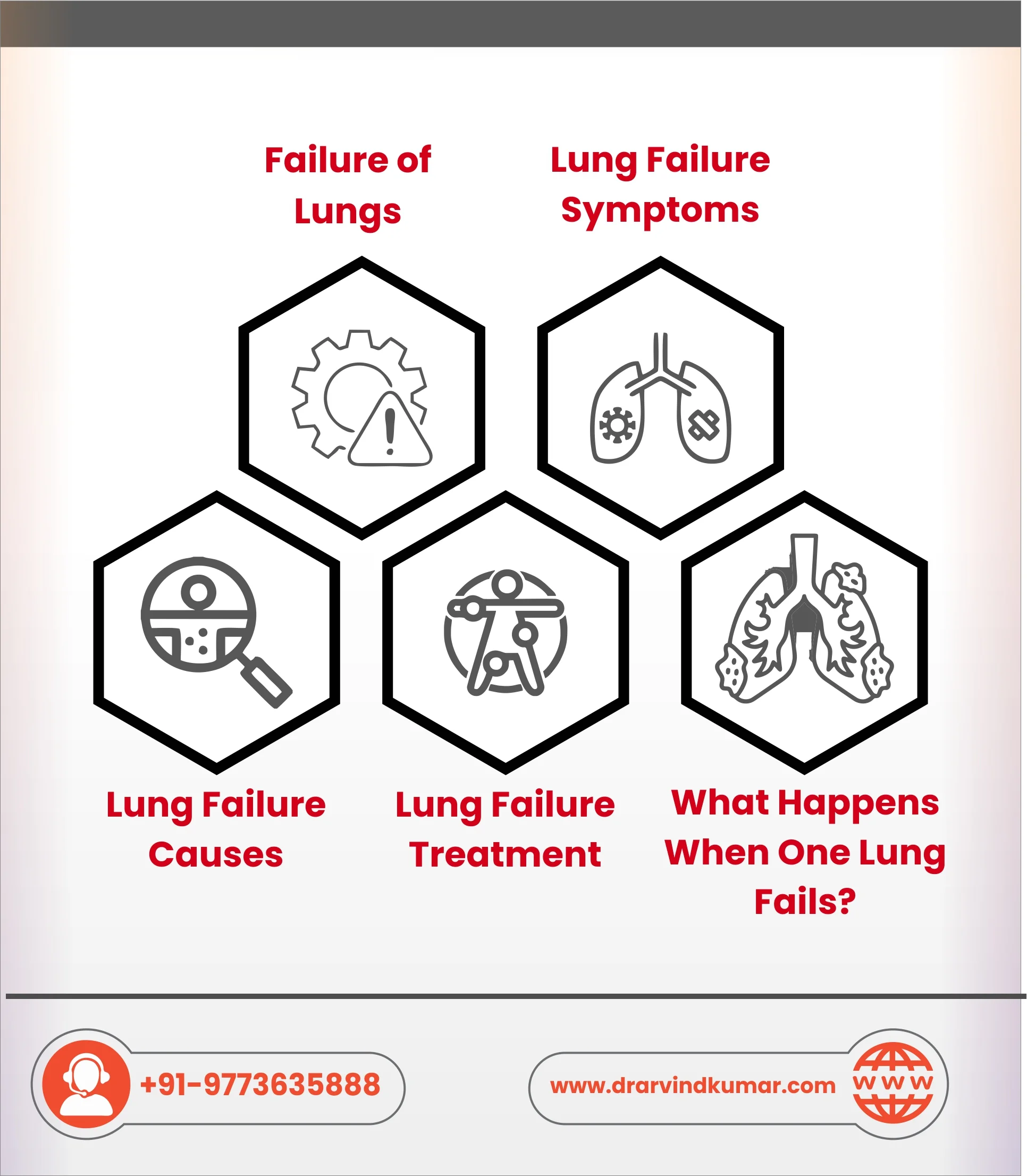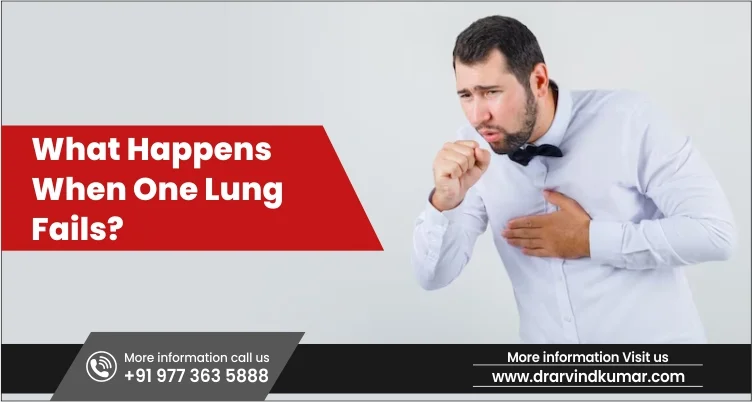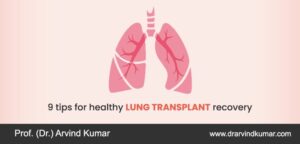In the course of our busy days, a persistent cough, a faint wheeze, or congestive lungs may hardly be noticed, but it is vitally important to pay attention to even minor signs because they could be the initial signs of lung diseases such as COPD, asthma, and lung cancer. Understanding the early indicators of lung failure disease might help you get treated before the condition worsens or even becomes life-threatening.
Failure of Lungs
Your mouth is connected to your right and left lungs through a network of tubes. Every time we breathe in, oxygen from the air is transported to the lungs through these tubes. This enters the bloodstream and travels to the different organs. The waste gas created by organs, carbon dioxide, crosses from the blood and into the lungs at the same time (gas exchange), where we exhale it.
Low blood oxygen and perhaps elevated blood carbon dioxide levels are indicators of failure of the lungs. When fluid accumulates in the lungs’ air sacs, your lungs can fail. Your lungs are then unable to allow oxygen into your blood. Your organs thus lack the oxygen-rich blood they require to function. If your lungs are unable to extract carbon dioxide from your blood, you may also experience acute respiratory failure.
Respiratory failure results when the capillaries, tiny blood vessels surrounding your air sacs, cannot adequately exchange carbon dioxide for oxygen. This can be an acute respiratory failure, where you experience symptoms immediately from not having sufficient oxygen in the body, or it could be chronic. In most cases, this could lead to death without prompt treatment. What Are The Signs That Your Lungs Are Failing?
Lung Failure Symptoms
When you see any of the warning signs listed below, schedule a visit with your doctor immediately. Your life could be saved by early detection.
Persistent cough: A cough lasting for eight weeks or more is said to be chronic. This crucial early symptom alerts you to a problem with your respiratory system.
Breathlessness: Shortness of breath that persists after exercise or that you experience with little to no effort is not typical. Another red flag is labored or difficult breathing due to congestive lungs, which is the sensation that it is difficult to breathe in and out.
Chronic mucus production: The airways create mucus, also known as sputum or phlegm, to protect themselves from irritants or diseases. Mucus production that lasted a month or more may be a sign of lung failure.
Wheezing: Noisy breathing or wheezing are symptoms of an uncommon obstruction or narrowing of the airways in your lungs.
Coughing up blood: It could possibly be coming from your lungs or upper respiratory tract. Whatever the source, it indicates a health issue.
Undiagnosed chest pain: pain that lasts for a month or longer, especially if it gets worse when you cough or breath in, could be one of the lung failure symptoms.
Lung Failure Causes
There are many causes of lung failure, the most common being due to the lungs or heart, which may cause one lung failure or a double lung failure. The lung disorders that lead to the failure of the lungs include chronic obstructive pulmonary disease (COPD), asthma, and pneumonia.
Lung failure causes may include:
- Ostructions that make breathing difficult: For instance, paralysis following a stroke, collapsed airways, and food getting caught in and obstructing your windpipe are conditions that make it difficult for you to breathe in and get air into your lungs.
- Conditions that make it hard for you to exhale: include COPD and asthma, both of which can result in mucus buildup and restricted airways. Asthma causes your airways to become narrow. You may find it challenging to exhale with either.
- Lung collapse: Your lungs may collapse if no air can get through. This can occur under specific circumstances, such as when the breathing muscles become incredibly weak, mucus obstructs one of the major airways, or a broken or fractured rib makes it difficult to take a deep breath due to excruciating pain. A pneumothorax is when air leaks from the lung and fills the area around it as a result of a chest or lung injury.
- The presence of fluid in your lungs: makes it more difficult for oxygen to enter your blood from the air sacs and for carbon dioxide to exit your blood into the air sacs for exhalation. Pneumonia, acute respiratory distress syndrome (ARDS), drowning, and other lung conditions can cause this. Heart failure can also be a cause. Sudden fluid collection in the lungs can also result from severe head trauma or injury.
- Muscular Issues: A spinal cord injury or a disorder affecting the nerves and muscles, such as muscular dystrophy, can cause breathing muscle issues. This could also occur if the heart is not pumping properly, your diaphragm and other breathing muscles are not receiving enough oxygen-rich blood, or you develop a severe sepsis infection.
Lung Failure Treatment
The underlying cause of respiratory failure determines the appropriate treatments. However, most patients with acute respiratory failure will probably need more oxygen as the first line of treatment.
Doctors often utilize this mode of oxygen delivery until they can stop the progression of, treat or reverse the underlying cause of respiratory failure.
Short-term lung failure treatment may include:
- drugs to treat infections, such as antibiotics, and diuretics to reduce body and lung fluid
- using an endotracheal tube
- mechanical ventilation
- to make breathing with a ventilator more bearable, a doctor may prescribe drugs that sedate the patient.

What Happens When One Lung Fails?
Most people can survive, if necessary, with one lung as opposed to two. Unless the other lung is destroyed, one lung can typically produce enough oxygen and eliminate enough carbon dioxide.
One lung can be absent, and one can still function reasonably well. Despite the fact that the lungs are essential bodily organs, cancer or other health issues may impair lung function and lead your doctor to recommend lung removal. Pneumonectomy is the medical term for lung removal surgery. Once you’ve recovered from the procedure, living with one lung is not too difficult. You won’t have any trouble performing regular, ordinary jobs. The remaining lung should be unaffected by the surgery. Eventually, you should be able to participate in most of your prior pursuits, but you may need to change your approach.
Despite this, each person will differ, and specific factors in each case must be taken into account, depending on the person’s lung function and any other problems they may be dealing with.
Depending on their overall health and the condition of the remaining lung, a person can live a long time with only one lung. To live with one lung, though, takes some getting used to.
However, a person will not have full lung capacity as opposed to when they have two lungs. Therefore, they may need to learn to slow down and adjust to this shift.
Although most people anticipate being permanently exhausted or unable to breathe without one lung, this is not typically the case. The individual may need to slow down their regular functions gradually, but they should be able to live a reasonably normal life with just one lung.
Conclusion
Numerous potential underlying causes for the severe medical illness known as lung failure exist. Confusion, fast breathing, and shortness of breath are symptoms. At the earliest indications of respiratory failure, seek emergency medical assistance to stop the problem from worsening.
However, if one lung failure forces you to have a lung removed, hold onto hope. Yes, it will be challenging, but if a person is generally healthy, having a lung removed shouldn’t adversely limit them. You’ll need to become aware of your restrictions in each circumstance. Even though you shouldn’t anticipate recovering your whole lung function after a lung removal, you can carry out most tasks fairly normally.
FAQs
What are the complications of living with one lung?
After a lung removal, most patients recover well. However, complications could arise, such as:
- Pulmonary blood clot (pulmonary embolism)
- Bleeding
- irregular heartbeats
- Pneumonia
Contact your doctor if you feel unexplained chest pain, a rapid or unusually slow heartbeat, get a fever, a new cough, or trouble breathing. Damage to your remaining lung can be avoided with prompt diagnosis and, if necessary, medical treatment.

.webp)



